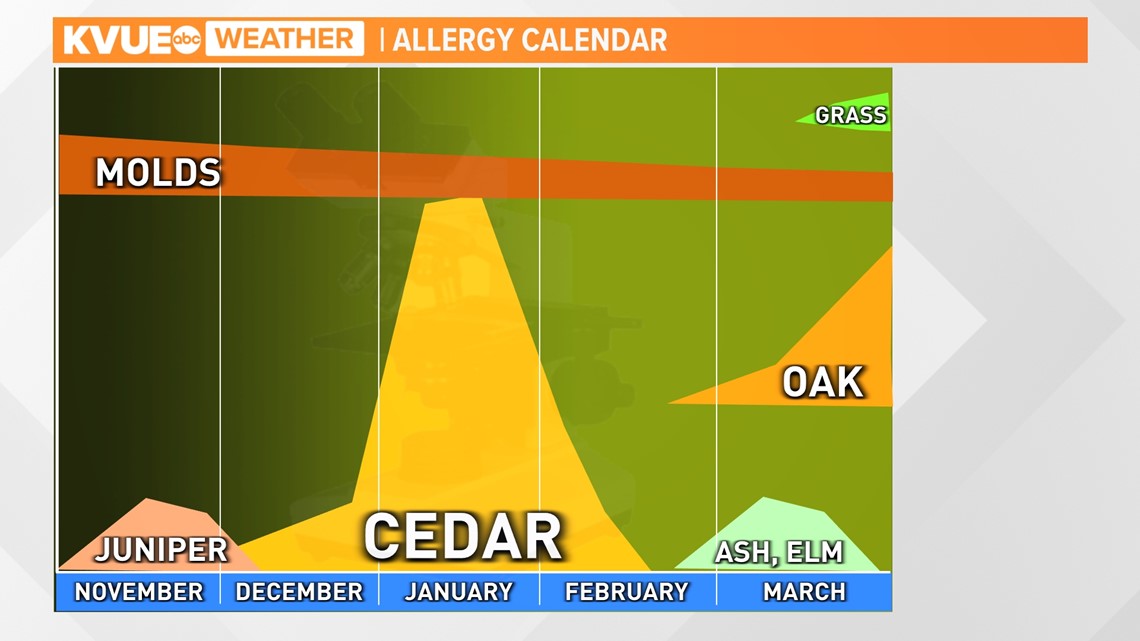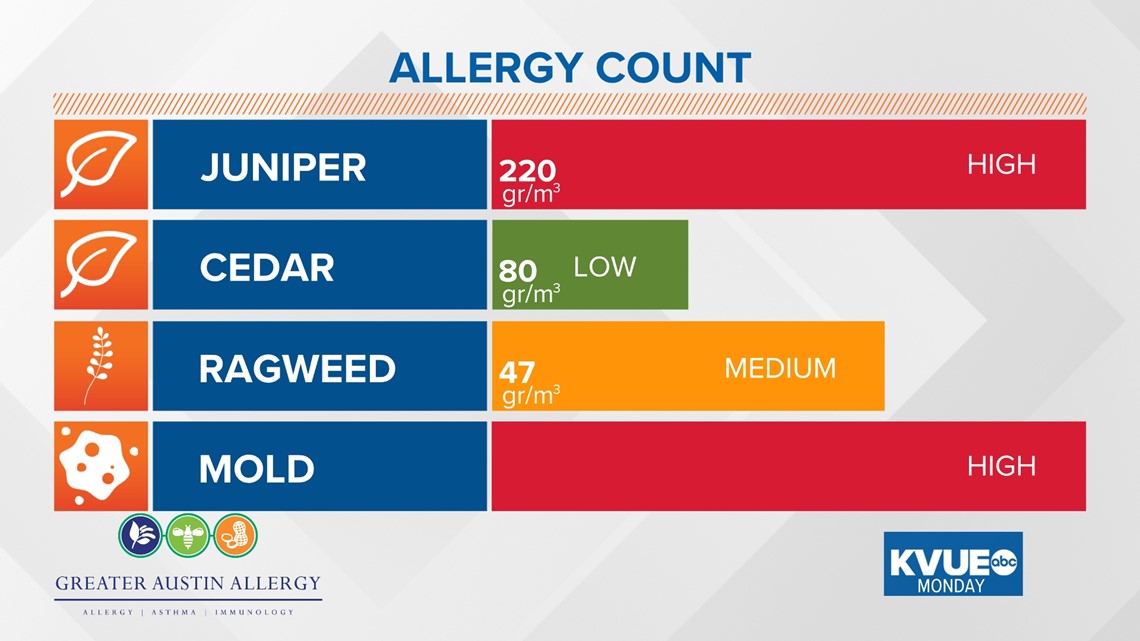AUSTIN, Texas — It happens every year and it never gets any easier! That's right – it's officially cedar season here in Central Texas.
Historically, the peak of cedar season occurs at the end of December through the beginning of January. Levels of cedar surge after the region experiences a widespread freeze and strong winds blow the allergens from the north. It's worth noting that Central Texas has yet to experience a widespread freeze this season.


Last year, no cedar was detected in our allergen sample before Dec. 1. However, that is not the case this year. The KVUE Storm Team started tracking low traces of cedar on the daily allergen count toward the end of November, but levels will be on the rise as we navigate through December and January.
KVUE is the only local news station that conducts its own allergy count each morning by taking air samples and analyzing them in-house.


Approximately 80 grams per cubic meter of cedar were identified on the allergy count for on Monday morning. The KVUE Storm Team expects levels of cedar to be higher on Tuesday due to the strong cold front that moved through Monday morning.
According to Texas MedClinic, mountain cedar is considered the most allergenic tree in Central Texas and can cause numerous symptoms such as sneezing, a runny nose and watery eyes. Some symptoms might even mimic those of COVID-19, like headaches and partial loss of smell.
Texas MedClinic suggests a variety of steps to help reduce symptoms and exposure to pollen. Some tips include keeping doors and windows closed, changing your AC filter often and changing your clothes after spending a lot of time outside. Allergy sufferers can also utilize over-the-counter medications to help manage symptoms.
Our allergy count is updated each morning and can be found at kvue.com/allergy.
PEOPLE ARE ALSO READING:

